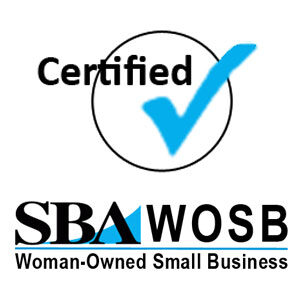Most schools publish one or two possible jobs for a program. But many more are possible.
InfoSurf Consulting uses public data sets to show the many occupations that are related to your programs.
With data from US Census, the federal Bureau of Labor Statistics extensive occupation profiles are weaved with education information from the National Center for Education Statistics. Those two sets weave together a hierarchy of jobs connected by common skills and knowledge.
Each node of this hierarchy illustrates a level of overlapping skills, knowledge and/or educational path among occupations.
- Jobs (Titles & Occupation Classes)
- Groups (SOC Major and Minor Groupings, Interest Areas)
- Education (CIP-SOC Crosswalk)
- Career Flow (O*Net Starter/Changer Matrices)
The BLS analyzes extensive information about occupations and the people who work in them then compile that information for us, the public:
-
- the Standard Occupation Classification system (SOC) produces categories of around 10-20 different jobs that have roughly the same skills and knowledge required. At this level, the BLS then averages out wages, typical education and creates detailed profiles for each category, or class, of occupations
- the O*Net system is a refinement of the categories within the SOC system intended to show how the occupation landscape is changing. Even more details about each job with a SOC occupation are compiled including jobs with some overlap in skills or knowledge across all education levels.
The NCES compiles detailed descriptions, statistics, then creates and updates the taxonomy used by schools to categorize their programs and their courses to produce the Classification of Instructional Programs (CIP). Then, using the occupation data from the BLS, the NCES produces the “CIP-SOC” crosswalk which maps the most common educational paths people have taken to their professions via SOC.
InfoSurf Consulting utilizes the major and minor groupings of the SOC to match interest areas that colleges use to categorize programs. After mapping overall groupings, we determine typical and suggested educations:
- Bureau of Labor & Statistics assesses a typical education expected for entry-level job and a typical on-the-job training category
- Oregon Employment Department assesses a competitive education level for workers applying in a crowded field of applicants
- InfoSurf’s suggested education extends the OED’s analysis to dive deeply into all high school or GED-level occupations where job seekers could enhance skills with a few courses or a short-term credential that pushes them to the top of the applicant pile.
As with many census data sets, a single “norm” value is presented, even though many occupations have a spectrum of acceptable levels. As well, for many occupations that officially do not require any formal post-secondary education, a job seeker can turn passing some college-level courses in that area into a competitive advantage over other applicants. Particularly when that seeker is new to that career, a certificate or some successfully completed courses form a competitive advantage.
Occupation Table Breakdown:
-
- Occupation Profile is from O*Net, an agency within the Bureau of Labor Statistics
- National Average Wage, Typical Education, and On-Job Training are from BLS’ SOC2010 data sets
- InfoSurf Suggested Education is our analysis of getting ahead of other job seekers and based on a Recommended Education published by the Oregon Employment Department’s data published on www.qualityinfo.org.
- Based on SOC2010 Taxomony. When the NCES incorporates SOC2018 into the CIP-SOC crosswalk, we will publish updated walks, as well. We can also produce interim reporting, should you need it.
Breakdown of Occupation Groups to Program Areas
| Program Area | SOC Major Group |
| Arts & Humanities | Arts, Design, Entertainment, Sports, and Media Occupations |
| Education, Training, and Library Occupations | |
| Legal Occupations | |
| Business & Management | Business and Financial Operations Occupations |
| Management Occupations | |
| Office and Administrative Support Occupations | |
| Sales and Related Occupations | |
| Healthcare | Healthcare Practitioners and Technical Occupations |
| Healthcare Support Occupations | |
| Protective Services | Military Specific Occupations |
| Protective Service Occupations | |
| Science & Math | Architecture and Engineering Occupations |
| Computer and Mathematical Occupations | |
| Construction and Extraction Occupations | |
| Farming, Fishing, and Forestry Occupations | |
| Life, Physical, and Social Science Occupations | |
| Social Services | Community and Social Service Occupations |
| Trades & Technical | Building and Grounds Cleaning and Maintenance Occupations |
| Food Preparation and Serving Related Occupations | |
| Installation, Maintenance, and Repair Occupations | |
| Personal Care and Service Occupations | |
| Production Occupations | |
| Transportation and Material Moving Occupations |
Dive even deeper into O*Nets explanation of it’s content model.
//Understand InfoSurf Solutions//
The InfoSurf Career Exploration books complement each other, providing list of related jobs by various ways in just a few minutes. We use the same data as O*Net — and the commercial tools like those from Burning Glass, EMSI, an Focus 2 — but offer an easy to use top-level map of jobs according to the overlap in skills, knowledge and/or education those jobs have. From this top-level you can take deep dives into the O*Net profiles if you use the eBooks or you can search using the occupation names within the eBook, if you have printed a copy.
At this time, we do not publish any eBooks but are searching for a partner. If you are interested in physical copies *or* have a preferred publisher, contact us.





